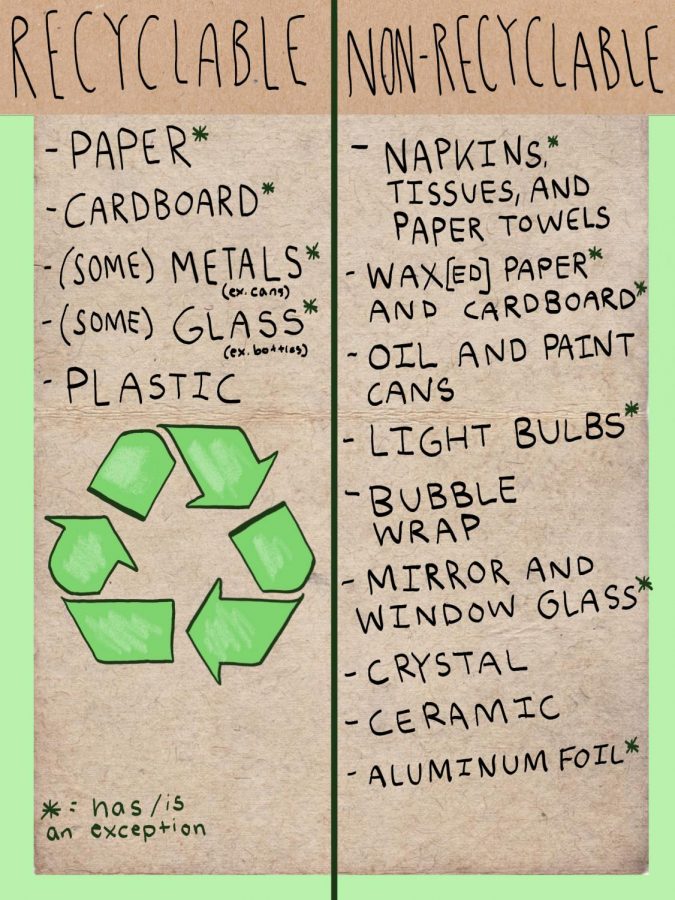… So How Can We Help?
So now that we know why we need to recycle, how exactly can we contribute to recycling efforts? The key is reduce, reuse, and recycle.
A rule of thumb for determining what is and what is not recyclable
- Know What You Can And Cannot Recycle
Recyclable items will have a green symbol comprised of three arrows bending towards each other. However, you can look at the infographic for a general rule of thumb on recyclable and nonrecyclable items.
2. Donate Gently Used Items
Have decorations you no longer like? Clothes that don’t fit? Books you will never read again? Instead of throwing them away, pass them onto a cousin or hand them off to thrift stores like Goodwill. You can also donate old electronics to schools so their working parts can be reused.
3. Buy Recyclable or Recycled Items
Just like donating old items to thrift stores will help, buying from them will help too. You can also buy recycled paper, notebooks, school supplies, clothes that have been partially made by recycled materials, and more, and purchase items that you can recycle yourself (such as avoiding food that comes in plastic containers).
4. Save Your Trash For Art!
Maybe you’re the artist, maybe you’re the artist’s friend. Either way, we artists might be ecstatic to receive your bottle caps, gears from your permanently broken watch, shards of shattered mirrors, broken hangers, scraps of fun paper or posters, or anything else you might have thrown away (except for perishables, obviously); one man’s trash is an artist’s treasure.
5. Buy Rechargeable Batteries
In America, an estimated three billion batteries are thrown away each year. Applying this knowledge to the whole world (without taking into account different consumption rates for each individual country), this means about 28 billion batteries are thrown away worldwide. Buying rechargeable batteries may seem like a small effort at first, but when you take a look at these numbers, there’s no denying it could make a significant difference. Not only will you be helping the environment, but you can save a little money too!
6. Skip Out On Plastic Bags
Instead, bring a fabric or burlap bag or ask the grocer to use paper bags if available- or, if you don’t have too many items, just carry your purchased items out.
In other words, try to minimize the materials you use and waste you create, reuse items, and, of course, recycle.




